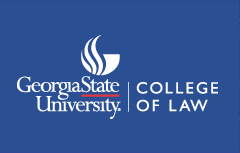Document Type
Article
Abstract
Refrigerators can now tweet. Today, almost sixty years after the states widely adopted the Uniform Commercial Code (UCC), the line between goods and services is more blurred than ever. When the UCC was drafted, a good was the simple opposite of a service. A good was something “movable” and tangible, and a service was not. Article 2 of the UCC, which governs sales, limits its scope to goods.
However, because Article 2 was drafted long before the proliferation of so-called “smart goods,” courts continuously struggle to determine when a smart good falls within Article 2’s scope. Courts have developed different tests over the years to deal with contracts containing a mixture of goods and services, but those tests produce questionable results when applied to smart goods. In the late 1990s,drafters attempted to address these issues with an ill-fated addition to Article 2 that ultimately failed. Still today, as software and tangible goods become more intertwined, software’s legal status remains a fundamental, yet unanswered, question. This unresolved question impacts consumers directly; whether a contract falls within the scope of Article 2 affects customers’ available warranties and remedies.
This Note discusses the classification difficulties posed by modern goods with embedded software and services. Part I explains the history of the UCC, the past efforts to address the difficulties, and the issues that still remain. Part II analyzes previous attempts to resolve the issue and courts’ current solutions to these classification difficulties. Part III proposes a contemporary solution to these modern challenges and discusses how such a solution might be implemented.
Recommended Citation
Chadwick L. Williams,
Not So Good: The Classification of “Smart Goods” Under UCC Article 2,
34
Ga. St. U. L. Rev.
453
(2018).
Available at:
https://readingroom.law.gsu.edu/gsulr/vol34/iss2/5
Included in
Civil Law Commons, Commercial Law Commons, Consumer Protection Law Commons, Contracts Commons, Internet Law Commons, Law and Economics Commons, Legal Remedies Commons, Litigation Commons, Science and Technology Law Commons, State and Local Government Law Commons
